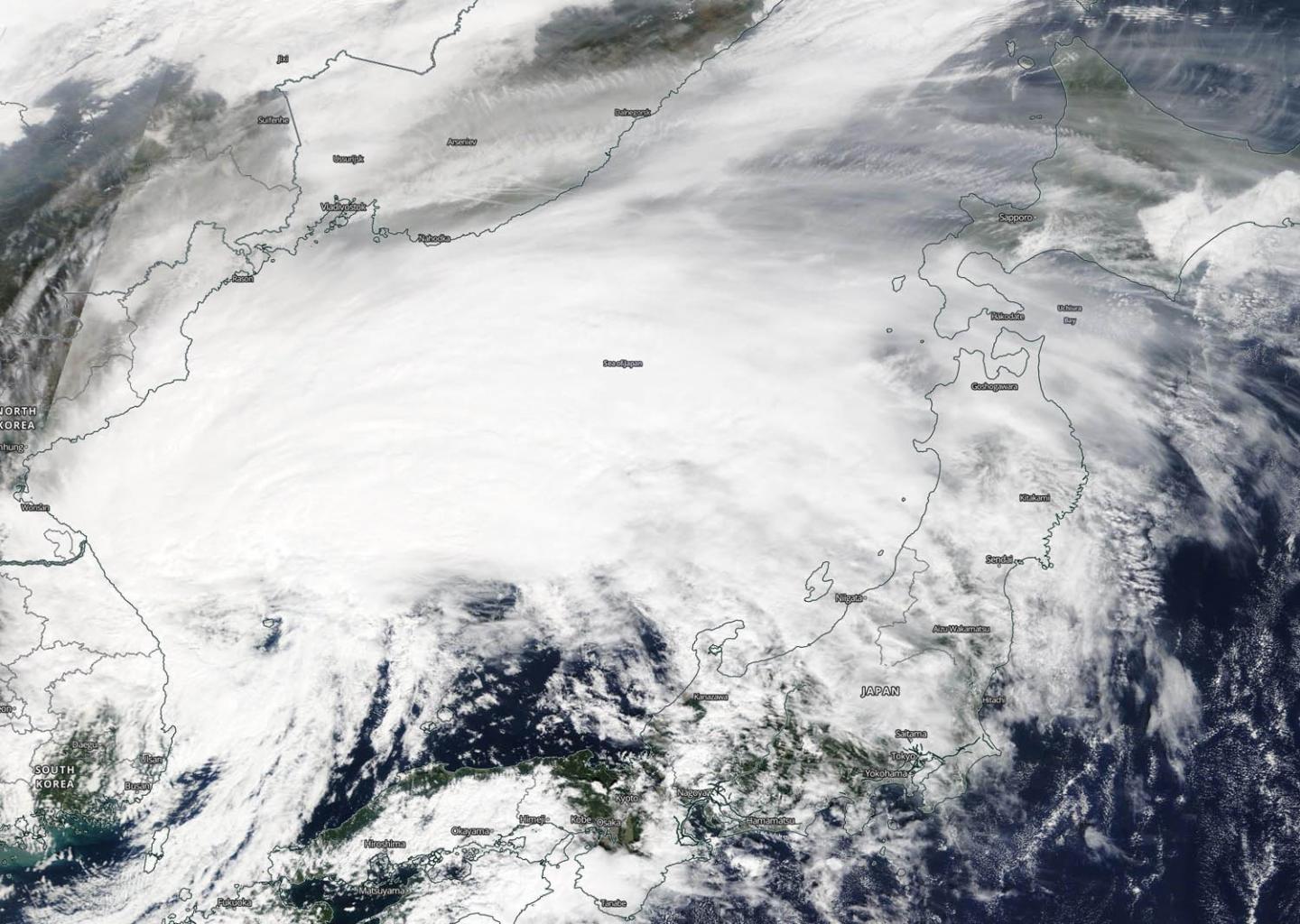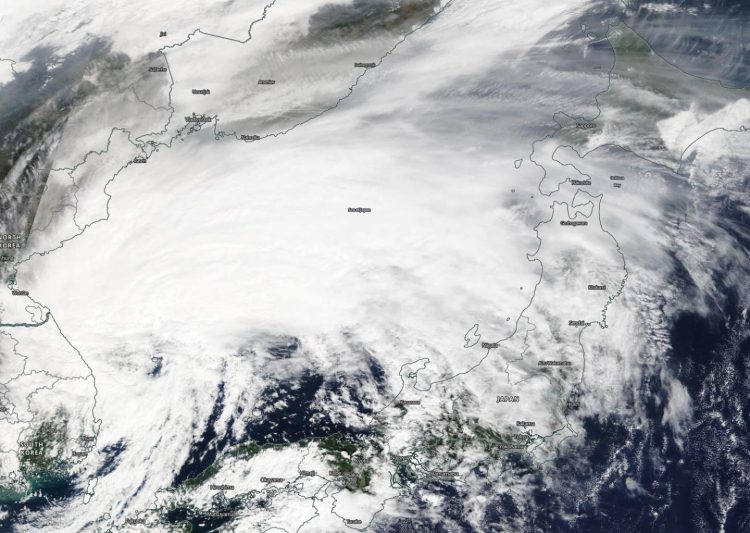
Credit: Credit: NASA Worldview, Earth Observing System Data and Information System (EOSDIS).
NASA’s Terra satellite passed over the Sea of Japan on Oct. 3 and captured a visible image of Tropical Storm Mitag. Clouds associated with the storm blanketed the Sea of Japan and satellite imagery indicated the storm was becoming extra-tropical.
On Oct. 3, the Moderate Imaging Spectroradiometer or MODIS instrument that flies aboard NASA’s Terra satellite provided a visible image of Mitag. The MODIS imagery indicated that Mitag had an elongated and poorly defined low level circulation center with the bulk of clouds and convection (rising air that forms the thunderstorms that make up a tropical cyclone) pushed to the northeast of the center as a result of southwesterly wind shear. Sheared convection and initial frontal features indicate that the system is undergoing extratropical transition.
What is Wind Shear?
In general, wind shear is a measure of how the speed and direction of winds change with altitude. Tropical cyclones are like rotating cylinders of winds. Each level needs to be stacked on top each other vertically in order for the storm to maintain strength or intensify. Wind shear occurs when winds at different levels of the atmosphere push against the rotating cylinder of winds, weakening the rotation by pushing it apart at different levels.
What does Extra-tropical Mean?
When a storm becomes extra-tropical it means that a tropical cyclone has lost its “tropical” characteristics. The National Hurricane Center defines “extra-tropical” as a transition that implies both poleward displacement (meaning it moves toward the north or south pole) of the cyclone and the conversion of the cyclone’s primary energy source from the release of latent heat of condensation to baroclinic (the temperature contrast between warm and cold air masses) processes. It is important to note that cyclones can become extratropical and still retain winds of hurricane or tropical storm force.
Mitag’s Final Warning
On Oct. 3 at 5 a.m. EDT (0900 UTC) the Joint Typhoon Warning Center issued the final warning on Tropical Storm Mitag. At that time, Mitag was centered near 38.0 degrees north latitude and 131.8 degrees east longitude. That is about 406 miles west-southwest of Misawa, Japan. Mitag was moving to the northeast and had maximum sustained winds near 40 knots (46 mph/74 kph).
Mitag is moving east-northeast and is expected to make landfall over northern Honshu, Japan, tracking south of Misawa. It is becoming extra-tropical over the Sea of Japan and the extent of the winds (wind field) is expected to become larger after it makes that transition.
Hurricanes are the most powerful weather event on Earth. NASA’s expertise in space and scientific exploration contributes to essential services provided to the American people by other federal agencies, such as hurricane weather forecasting.
###
By Rob Gutro
NASA’s Goddard Space Flight Center
Media Contact
Rob Gutro
[email protected]
Original Source
https:/





